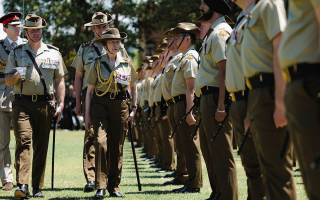UK could not defend itself from Russian ballistic missile threat, expert warns
As global tensions rise and technology advances, countries are growing increasingly concerned about threats from the air.
Israel has an Iron Dome and now, US president Donald Trump has issued an executive order for the US to have an equivalent defence system.
But what about the UK?
Nations like Russia and China, and possibly Iran and North Korea, have missiles capable of striking the UK.
Moscow to London is 1,600 miles, well within the range of Russia's ballistic and cruise missiles.
"The most pressing threat to this country is that posed by Russia," defence expert Dr James Bosbotinis told BFBS Forces News.
"The highest end threat you would be looking at would be a system such as Oreshnik intermediate-range ballistic missile, which we would not currently have the means to defend against."
Western China to London is 3,600 miles and China's intercontinental ballistic missiles could easily strike the UK.
Tehran to London is 2,700 miles and Iran has missile capabilities that may go farther than this distance, where as Pyongyang to London is 5,400 miles.
North Korea claims to have missiles that can far exceed this distance.
Each of these nations could hit British soil, so how prepared is the UK to defend itself?
Well, Dr Bosbotinis says this depends on what missile we are talking about.
They break down into three categories; ballistic, cruise and hypersonic, differing in speed, trajectory and how difficult they are to intercept.
Ballistic missiles follow a high arching trajectory, leaving the atmosphere before re-entering at high speeds.
They can be short, medium or intercontinental range with some carrying nuclear warheads.
Cruise missiles fly at lower altitudes, are highly manoeuvrable and can be subsonic or supersonic, making them harder to detect but easier to intercept than ballistic missiles.
Hypersonic missiles, which can be either glide vehicles or cruise missiles, travel at Mach five plus with unpredictable flight paths, making them extremely difficult to track and counter.
They also combine the speed of ballistic systems with the manoeuvrability of cruise missiles, posing a major challenge for modern air defences.
And let's not forget the threat of long-range drones.
So what does the UK have in its arsenal to defend itself?
Type-45 destroyers equipped with the Sea Viper Air defence system and Aster missiles, which counter aircraft and some ballistic missile threats.
The UK also has Sky Sabre, a medium-range ground-based air defence system designed to intercept aircraft and cruise missiles, but not ballistic or hypersonic threats.
RAF Typhoons and F-35s can intercept cruise missiles in some scenarios, but are not designed for missile defence.
But the bigger question is what don't we have?
The UK has no dedicated ballistic missile defence system like the US's THAAD and there is no protection against hypersonic missiles, no advanced tracking or interceptors to counter them.
Gaps in medium-range air defences leave us exposed to enemy aircraft, cruise missiles and long-range drones.
The UK has no land-based, long-range missile interceptors and while we do have ground-based missile detection systems at RAF Fylingdales, we lack a dedicated space-based missile detection system.
So what needs to be done? Investment, innovation and international cooperation.
A layered missile defence system integrating short, medium and long-range interceptors would help close the gaps.
Upgrading the Type 45 destroyers to counter advanced threats, expanding the Sky Sabre system and deploying land-based long-range interceptors could also strengthen the UK's defences.
But with hypersonic missiles changing the game, the UK also needs next-generation radar and space-based early warning systems to detect and track them before they strike.
Building this defence won't happen overnight and the price tag will be steep, but the alternative could be far more expensive in the long run.









